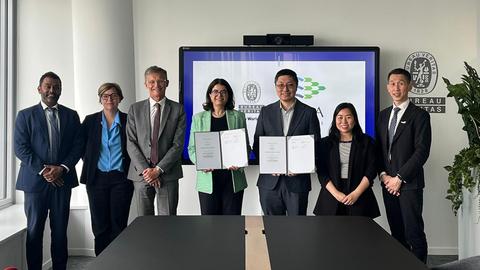Publications
FOCUS 72: High Tech On The High Seas

Giles Holtby, Managing Director Asia for Zodiac Milpro International, explains how digitalization is ingrained in the company’s operations.
Who are Zodiac Milpro?
Zodiac Milpro supplies inflatables and rigid hull inflatable boats (RHIB) “For those who work on the water”. For over a century, it has been dedicated to offering the most advanced technologies for professional and military organizations around the world.
What has been the impact of the digital revolution on your industry?
In the wider maritime industry: huge. Ten years ago, only the most hard-core of futurists would have dreamed that it could be commonplace to have a smart speaker capable of answering questions and playing media. The impact of big data and connected devices (“Internet of Things”, or IoT) has been felt across homes, offices, factories & vehicles; adoption of embedded IoT and AI has allowed businesses and consumers to make use of data in a thousand new ways – from the combine harvester that can map a field’s yield and plot the best places to apply fertilizer, to embedded maintenance software in a jet engine that can predict a part’s failure before it happens and schedule it for replacement.
The maritime industry has been quick to capitalise on the cost-saving benefits of increased ship-to-shore connectivity offered by affordable satellite communications combined with embedded technologies to optimise and streamline every aspect of operations at sea, in ports and across fleets – some examples being vessel tracking, predictive maintenance, cargo handling and crew safety.
What changes are you seeing in the military small boat field?
Military small boats have evolved from their core function of speed and reliability towards multi-mission platforms, in order to respond more quickly and with increased accuracy to critical situations. This combines:
• Connectivity - (Satellite Communications, WiFi, 4G & 5G data connections, Radios)
• Detection systems (Radar, Thermal Imagers, shared sensor data with motherships, fixed sites, air assets) • Stealth technologies
• Autonomous functions – (dedicated unmanned systems and “optionally”)
• Effectors – increasing the range of “effects” that the boat can generate beyond just moving people around(e.g. intelligence gathering, complex weapon systems with multi-axis stabilization)
Zodiac Milpro was recently approached by the security detail of a VVIP, to provide a number of fast RIB’s for the protection of their “principal” on their private yacht.
Working with the security detail, we integrated a complete suite of sensors on their Zodiac Hurricane ZH1100 interceptor boats (radar, imaging sonar, thermal imagers) through the MARSS NiDAR system to allow the private yacht, shore-based teams, the boats and their helicopters to all share sensor information.
For the security commander this allows them to set up “alarm” zones within which any movement detected by any of the “assets” to be immediately flagged as suspicious, and to extend the “zone of protection” further.
What is the impact of AI on your industry?
AI is where this gets really interesting; the most developed nations – the “early adopters” of the military equipment market, are all faced with the challenge of an aging population – reducing the pool of military-age manpower. Technology, which can reduce reliance of military, police and paramilitary forces on large numbers of skilled operators, are becoming more and more attractive; especially for “3 D’s” roles -those that are ‘Dirty, Dangerous or Dull.’ For example, a number of Navies have begun to deploy unmanned “protector” boats to patrol harbors and intercept potential boat-borne suicide bombs. But a lot of people are uncomfortable with the idea of “Terminator” style independent robots with lethal armament, so we need to work with government and international bodies to make sure the appropriate legal and ethical frameworks exist.

Interview with Giles Holtby, Managing Director Asia for Zodiac Milpro International , for FOCUS #72. To read more articles from this issue, download your digital copy here


